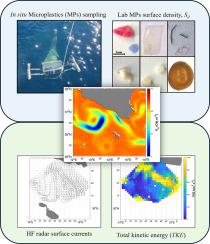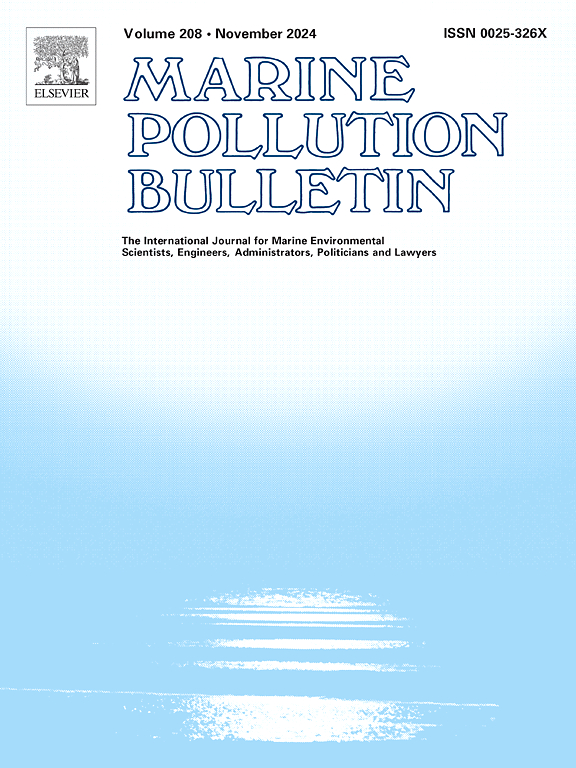Towards microplastic hotspots detection: A comparative analysis of in-situ sampling and sea surface currents derived by HF radars
IF 5.3
3区 环境科学与生态学
Q1 ENVIRONMENTAL SCIENCES
引用次数: 0
Abstract
Marine plastic pollution is a global issue affecting ecosystems and various aspects of human life. The scientific community is exploring new monitoring and containment approaches. Because in-situ sampling campaigns are time and resource demanding, there is a focus on integrating different approaches for marine litter monitoring. Data of two in-situ surveys (using a manta net) were compared to sea surface currents data and derived products with the aim to find a proxy variable of the plastic occurrence. Sea surface currents data were provided by the CALYPSO HF network (operating in the Sicily Channel since 2012). Notably, the occurrence of fragment items is inversely correlated with the total kinetic energy (r2 ~ 0.85). This result was confirmed by a Lagrangian tracking model considering the deployment of virtual drifters around each in-situ measurement point. The proposed method applied to a wider domain using Copernicus Marine Service (CMS) data revealed that high plastic accumulation areas could be located at the centre of eddies often occurring in the winter period. However, uncertainties arise by the moderate-low correlation found between HF CALYPSO and CMS sea current data.

微塑料热点探测:现场取样与高频雷达得出的海面洋流对比分析。
海洋塑料污染是一个全球性问题,影响着生态系统和人类生活的各个方面。科学界正在探索新的监测和遏制方法。由于现场取样活动需要大量的时间和资源,因此人们开始关注整合不同的海洋垃圾监测方法。我们将两次现场调查(使用蝠鲼网)的数据与海面洋流数据和衍生产品进行了比较,目的是找到塑料出现的替代变量。海面洋流数据由 CALYPSO 高频网络(自 2012 年起在西西里海峡运行)提供。值得注意的是,碎片的出现与总动能成反比(r2 ~ 0.85)。考虑到在每个现场测量点周围部署虚拟漂流器,拉格朗日跟踪模型证实了这一结果。利用哥白尼海洋服务(CMS)数据,将所提出的方法应用于更广阔的领域,发现塑料积聚高发区可能位于冬季经常出现的漩涡中心。然而,高频 CALYPSO 和哥白尼海洋服务系统海流数据之间的相关性较低,因此存在不确定性。
本文章由计算机程序翻译,如有差异,请以英文原文为准。
求助全文
约1分钟内获得全文
求助全文
来源期刊

Marine pollution bulletin
环境科学-海洋与淡水生物学
CiteScore
10.20
自引率
15.50%
发文量
1077
审稿时长
68 days
期刊介绍:
Marine Pollution Bulletin is concerned with the rational use of maritime and marine resources in estuaries, the seas and oceans, as well as with documenting marine pollution and introducing new forms of measurement and analysis. A wide range of topics are discussed as news, comment, reviews and research reports, not only on effluent disposal and pollution control, but also on the management, economic aspects and protection of the marine environment in general.
 求助内容:
求助内容: 应助结果提醒方式:
应助结果提醒方式:


